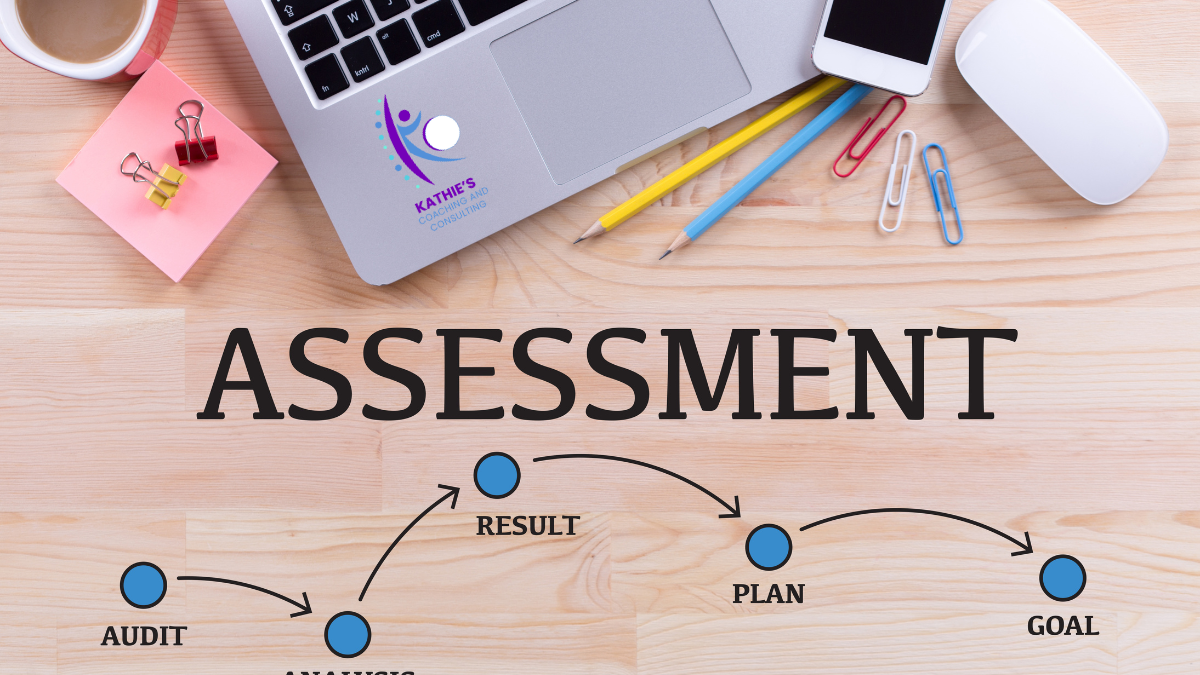Why Choice and Voice Matter: Team Assessments
Employee choice and voice in corporate wellness
Welcome to the world of corporate wellness, where the secret to an engaged, healthy, and happy workforce lies in the powerful principles of choice and voice. What does a corporate wellness consultant do?
In this blog post, we'll explore the psychology behind these concepts and how they can transform your employee wellness programs.
Whether you're an HR director or an aspiring corporate wellness leader, understanding these principles can help you create programs that not only attract participation but also foster lasting engagement.
Why Choice and Voice Matter
Imagine you're in a cafeteria with only one meal option every day. Even if it's your favorite dish, eventually, you might start to dread mealtime.
Now, think about a cafeteria with a variety of options, catering to different tastes and dietary needs.
You'd probably feel more excited about eating there, right?
This analogy perfectly illustrates the importance of choice in employee wellness programs. When employees have a say in the programs and initiatives designed for their well-being, they are more likely to feel valued, respected, and, most importantly, engaged.
The Science Behind Choice - Self Determination Theory
The Science Behind Choice
Psychology research supports the idea that having choices increases motivation and satisfaction. This concept, known as "self-determination theory," suggests that people are more motivated and perform better when they feel they have control over their actions.
Motivation is something I geek out about. Read more motivation articles here!
In the workplace, this means that when employees are given the opportunity to choose aspects of their wellness programs, they are more likely to participate and remain engaged.
Voice: The Power of Being Heard
Voice: The Power of Being Heard
Equally important is the concept of "voice" — allowing employees to express their preferences, needs, and feedback.
When employees feel that their opinions matter and are taken into account, it boosts their sense of ownership and commitment to the program. This means employee engagement in your programs is an all-time high!!
Assessing Team Needs and Preferences
So, how can you effectively incorporate choice and voice into your wellness programs? It starts with understanding your team's needs and preferences.
Here are some psychology-backed methods to help you assess these crucial factors:
Surveys and Questionnaires
Surveys and Questionnaires
One of the simplest and most effective ways to gauge employee preferences is through surveys and questionnaires. These tools can help you gather data on what types of wellness activities and programs your employees are interested in. Make sure your surveys are anonymous to encourage honest feedback.
Pro Tip: Use a mix of multiple-choice questions and open-ended responses to get both quantitative and qualitative data. For example, ask questions like:
"Which of the following wellness activities would you be interested in? (Select all that apply)"
"What is one wellness initiative you would love to see implemented?"
Focus Groups
Focus Groups
Focus groups provide a more in-depth understanding of employee preferences. Select a diverse group of employees and facilitate a discussion on their wellness needs and desires. This setting allows for more detailed feedback and can uncover insights that surveys might miss.
Pro Tip: Keep the group size manageable (around 6-10 participants) to ensure everyone has a chance to speak. Use a skilled moderator to guide the conversation and keep it focused.
Suggestion Boxes
Suggestion Boxes
Sometimes, the simplest methods are the most effective. Placing suggestion boxes in common areas can provide employees with an easy way to share their thoughts and ideas about the wellness program.
Ensure that you regularly review and act on these suggestions to show employees that their input is valued.
Pro Tip: Digital suggestion boxes can be even more effective in today's remote and hybrid work environments. Use tools like Google Forms or dedicated feedback platforms to collect suggestions.
One-on-One-Meetings
One-on-One Meetings
For a more personalized approach, consider incorporating wellness discussions into regular one-on-one meetings between employees and managers.
This allows for a deeper dive into individual preferences and can help identify specific needs that might not be captured in broader assessments.
Pro Tip: Train managers to ask open-ended questions about wellness and encourage employees to share their thoughts freely. Questions like "How can we support your well-being better?" can open up valuable conversations.
Designing a Wellness Program with Choice and Voice
Designing a Wellness Program with Choice and Voice
Once you've gathered data on your employees' needs and preferences, it's time to design a wellness program that reflects their input.
Here are some strategies to ensure your program offers both choice and voice:
Offer a Menu of Options
Offer a Menu of Options
Create a wellness program that includes a variety of activities and initiatives. This could include fitness classes, mental health workshops, nutritional counseling, stress management seminars, and more. The key is to provide a range of options that cater to different interests and needs.
Pro Tip: Consider using a points-based system where employees can earn rewards for participating in different wellness activities. This adds an element of fun and competition, further boosting engagement.
Empower Employee-Led Initiatives
Empower Employee-Led Initiatives
Encourage employees to take an active role in designing and leading wellness initiatives. This could be in the form of wellness committees or employee-led interest groups.
When employees are directly involved in creating the program, they are more likely to feel a sense of ownership and commitment.
Pro Tip: Provide support and resources for these employee-led initiatives. This could include budget allocations, access to facilities, or time during work hours to plan and execute wellness activities.
Regularly Review and Adapt
Regularly Review and Adapt
A successful wellness program is not static. Regularly review the program based on employee feedback and participation data.
Be willing to make adjustments and try new things to keep the program fresh and relevant.
Pro Tip: Conduct quarterly reviews of the wellness program and share the results with the entire team. This transparency shows employees that their feedback is being taken seriously and acted upon.
Foster a Culture of Wellness
Foster a Culture of Wellness
Beyond specific programs and activities, it's important to foster a culture of wellness within the organization. This means integrating wellness into the company's values, policies, and everyday practices. Encourage managers to model healthy behaviors and support their teams in prioritizing well-being.
Pro Tip: Celebrate wellness successes and milestones. Recognize employees who actively participate in wellness activities and share success stories to inspire others.
Dream Plan Do
Conclusion
Incorporating choice and voice into your employee wellness programs is not just a nice-to-have — it's a must-have. By understanding and applying the psychology behind these principles, you can create a wellness program that truly resonates with your employees.
This leads to higher engagement, increased satisfaction, and ultimately, a healthier and more productive workforce.
Remember, the journey to a successful wellness program starts with listening to your employees and giving them the power to shape their own well-being.
So, start those conversations, gather that feedback, and watch your wellness program thrive!
If you found this blog post helpful and want to dive deeper into creating impactful wellness programs, subscribe to our newsletter for more tips, insights, and resources.
Let's build a healthier, happier workplace together!
About the Author: Kathie Owen is a seasoned Corporate Wellness Professional with over a decade of experience driving wellness initiatives.
With a rich background as a certified fitness trainer and life coach since 2002, Kathie combines her practical expertise in health and wellness with a deep understanding of psychological principles, thanks to her degree in Psychology.
Her holistic approach to corporate wellness not only fosters a culture of health and engagement among employees but also supports organizations in achieving their most ambitious wellness goals.
Kathie's Coaching and Consulting reflects her passion for empowering corporate executives to create thriving workplace environments through strategic wellness programs and employee engagement. Kathie’s Bio Here!
Kathie Owen, Corporate Wellness Professional since 2012 (Our Story)



























From corporate burnout to Chief Encouragement Officer: I transformed anxiety into leadership using sports psychology, intuition, and Neville Goddard's visualization. Now I help executives perform under pressure and lead with encouragement through the Encouragement Collective.
#ChiefEncouragementOfficer #BurnoutRecovery #SportsPsychology #LeadershipDevelopment #ExecutiveWellness #MindsetCoach